Dominaria United is out, and it’s a format with strong fixing and multiple rewards for going multicolor. There’s Domain, off-color Kicker, and the always-present reward of being 3+ colors—getting to play strong multicolor cards (or cards of an underdrafted color) that other players cannot.
We’ve actually seen a fair number of sets in recent years with strong common fixing: ten common gainlands in Kamigawa: Neon Dynasty and Ikoria: Lair of Behemoths, ten common snow duals in Kaldheim, and abundant treasures in Adventures in the Forgotten Realms. That list excludes Streets of New Capenna, Strixhaven: School of Mages, Ravnica Allegiance, and Guilds of Ravnica, all faction sets that require large amounts of common fixing.
It seems like ample fixing has become a mainstay of every other Limited format—we’re not just getting a couple green fixers and Evolving Wilds, we’re getting abundant fixing that often plays directly into a set’s themes. So, today, let’s consider what effect is has on Limited and whether this may be a path Wizards continues following.
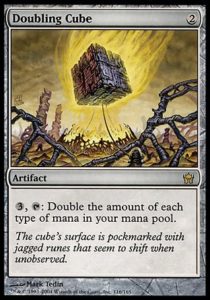
Lessons from a different kind of Limited
To talk about fixing, we should first answer a few questions about it. Namely, what does fixing do to a format? What happens when fixing is too strong? What happens when there isn’t enough to go around? We’ll explore these questions using one of my favorite Limited formats, Cube, then expand to recent Limited sets.
To put it simply, I love drafting lands. It makes more of your draft picks meaningful. In a standard draft with 45 cards, 22 of your picks end up in your sideboard—half of what you drafted! Every time you draft a land that makes your deck, the size of your sideboard shrinks and you get to play more cards you drafted. By taking fixing early on, you commit to playing whatever is open (or just everything), so in pack three, when other players are committed to their color combinations and are trying to find the right fixing, you can freely scoop powerful cards other players can’t play.
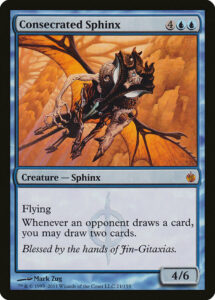
Fixing creates a constant tension in Cube design around the well-known archetype of Five Color Goodstuff decks (let’s call them 5C for short), where you take this strategy to its extreme. It’s not a problem for 5C to exist or be strong, but there are two big dangers with it being overly strong.
First, 5C decks often have homogenous gameplay: get your colors online, survive into the midgame, then play haymakers until you win. The nature of how you win is often inconsequential—Primeval Titan, The Scarab God, Niv-Mizzet Reborn, and Urza, Academy Headmaster all have different text, but they share the same play pattern of quickly turning the time of the game and winning for you if uncontested. From one draft to the next, the actual cards you play with may differ, but the experience of playing with those cards can be overly similar. Formats have less longevity when decks with drastically different cards have similar play patterns (even if the decks are sweet to play).
The second issue is overly strong 5C presents little counterplay. It’s good for control decks like 5C to have powerful endgames, but if it’s too easy for them to survive and find their haymakers, there’s not much most decks can do to stop them. There are plenty of factors that can cause this: aggro being too weak, fixing being too plentiful, comeback cards being too plentiful, finishers being too strong, too many cards that only work in 5C. But when 5C is overly supported, drafts can devolve into multiple players all fighting over 5C. This can derail not only the 5C drafters, but everyone around them who are getting less access to fixing and fewer powerful cards.
For these reasons, Cube designers tend to be very mindful about the fixing and rewards for 5C they include. Most designers generally want to include a fair amount of fixing to encourage multicolor play and consistent manabases—if you include almost none, you incentivize consistent, monocolor decks potentially to the exclusion of even two color decks. That’s what intentionally happened in Throne of Eldraine, and unintentionally happened in Streets of New Capenna (where abundant fixing was invalidated by powerful aggressive cards and weak rewards for going 5C). But enough about recent sets defined by a lack of fixing or 5C support, let’s talk about sets that were.
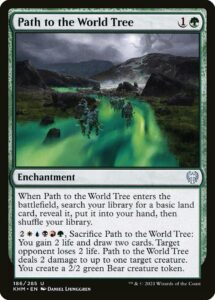
Strixhaven was a set defined by five archetypes, but two of them (RW Lorehold and BG Witherbloom) were underpowered. As always, players adapted by drafting RW and BG less and gravitating to the more powerful decks of BW, UR, and GU. Normally, RW and BG being underdrafted would compensate for them being underpowered, since the powerful rares and uncommons opened at the table would likely be passed to the few players in those color combinations. That’s dynamic balancing, where player behavior compensates for the imbalances inherent to all formats (it simply isn’t possible or desirable to create a perfectly balanced format, and even if you could, each draft generates a random, imbalanced, and unique assortment of cards).
However, Strixhaven had strong, abundant fixing. Greedy blue decks scooped up the best Lorehold and Witherbloom cards thanks to the common Campus lands and ready access to Environmental Sciences with any Learn card. That undermined dynamic balancing, making it so dedicated Lorehold and Witherbloom drafters weren’t rewarded for their commitment to a less popular color combination. The same happened in Kaldheim with five color Snow. It happened in Adventures in the Forgotten Realms and Battle for Baldur’s Gate, where treasure generated by BR decks made it facile for them to splash the bombs blue players needed to compete.
I always saw fixing in Limited as expanding the number of archetypes available in a format. Looking KDH, STX, and AFR, I now see how fixing can also constrict them but undermining dynamic balancing. And while it’s far too soon to make any pronouncements about the effects of fixing on Dominaria United, the set has made me appreciate why fixing might be overpowered in KDH, STX, and AFR but not in IKO or NEO.
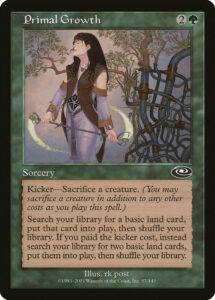
Getting more than you paid for
In some formats, fixing is just there to fix. The gainlands of Khans of Tarkir, Ikoria: Lair of Behemoths, and Kamigawa: Neon Dynasty provide a nice little life bonus to compensate for entering the battlefield tapped, but the only reason to put them in your deck is because you want access to both colors of mana.
The same is not true in Dominaria United, Kaldheim, or Adventures in the Forgotten Realms. In Dominaria United, the common dual lands don’t merely allow you to stretch your colors, they also enable access to off-color Kicker and increase your Domain. Kaldheim’s snow lands pulled double duty by enabling a slew of snow-matters effects. AFR’s treasures provided ramp (something basically all decks are happy with) and sacrifice fodder while incidentally providing fixing. For DMU, KDH, and AFR, commonly available fixing was more than the sum of its parts, feeding both set-specific synergies and the general need for fixing.
One could argue that giving common fixing extra utility increases competition for it. If everyone wants it, then no one will get enough to draft overpowered 5C-style decks with repetitive play patterns that go over the top of other archetypes. I don’t believe that past experience supports this—Kaldheim and Strixhaven devolved into greedy multicolor decks versus streamlined aggressive white decks and stayed that way. Black-red was overdrafted in AFR and nevertheless continued to overperform while blue remained a challenge to draft. Strixhaven and Streets of New Capenna had a smaller than usual number of archetypes (due to being faction sets) which condensed into an even smaller number of archetypes when fixing excised weaker archetypes rather than raising them up via dynamic balancing.
I might argue that any format with large amounts of fixing that is more than the sum of its parts will share the aforementioned sets’ issues. You don’t need 17 pieces of fixing to have a consistent 5C-style archetype—in a less powerful, slower format like Premier Limited, 6-8 sources can be sufficient. With cycles of ten common dual lands or cards like Environmental Sciences and Prophetic Prism, it’s not hard for several players to get all the fixing they need and enjoy the multicolor rewards inherent to all formats that give players ample fixing. It’s a newer problem and one we’ve not yet seen much adjustment to.
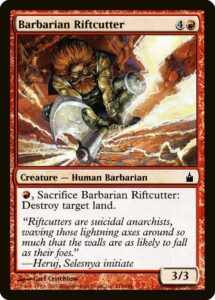
I used to see fixing as an inherently good thing. Many of my favorite formats had at least some fixing. It created new archetypes beyond the ten color pairs while minimizing color screw even in two color decks. I love how Wizards has built upon the success of snow lands in Coldsnap, Landfall and nonbasics in Zendikar, and gates in Return to Ravnica block to create interesting gameplay around nonbasic lands which do more than merely be lands. I think Magic would be a worse game if it abandoned those innovations. Still, I wonder if there’ll be good ways to separate the value of fixing from the additional bonuses. It’s just hard to create novel twists on lands that are simple, backwards-compatible, and provide a sufficient bonus without also playing into the color-splashing inherent to the mana system.
We saw some of this with Zendikar’s nonbasic lands and Kaldheim’s snow basics—the lands were more than the sum of their parts, but they don’t also incidentally fix your mana and encourage you to be greedy. We’ll likely see more of this in Wilds of Eldraine, as Throne of Eldraine had a strong monocolor focus (which its nonbasic lands reinforced). Double Masters 2 experimented with strong 2-3 color fixing that didn’t work well for 4+ color decks, but Cryptic Spires arguably has some nontrivial play experience issues. We also saw Wizards overcompensate for this in Streets of New Capenna by overpowering the two color aggressive decks meant to prey on greedy decks and underpowered the three color faction decks most players were supposed to play.
Getting fixing right is a very, very tricky balancing act—and for all I know, the expansion and effects of powerful fixing might not even be considered an issue to Wizards and a majority of the playerbase. That said, I wouldn’t be surprised to see some changes in how common fixing is done going forward and am always excited to see what Wizards comes up with next.
Zachary Barash is a New York City-based game designer and the last commissioner of Team Draft League. He designs for Kingdom Death: Monster, has a Game Design MFA from the NYU Game Center, and does freelance game design. When the stars align, he streams Magic (but the stars align way less often than he’d like).

